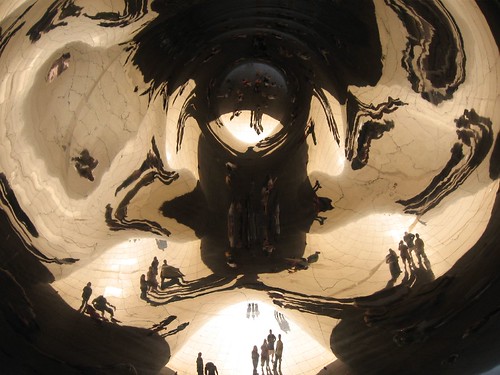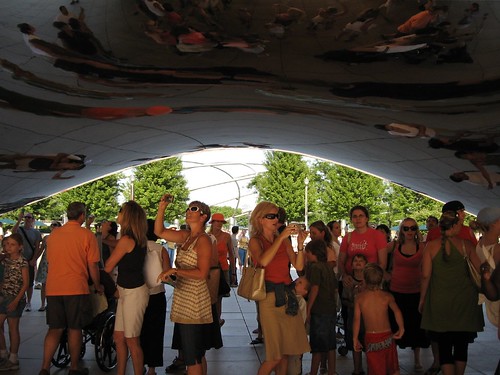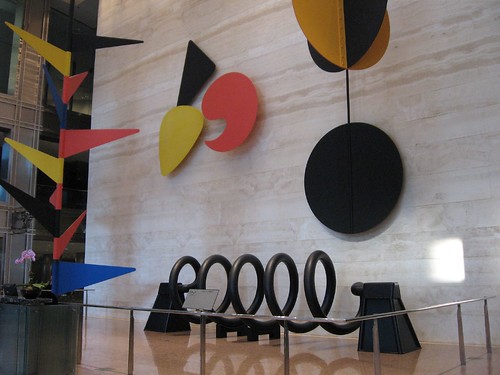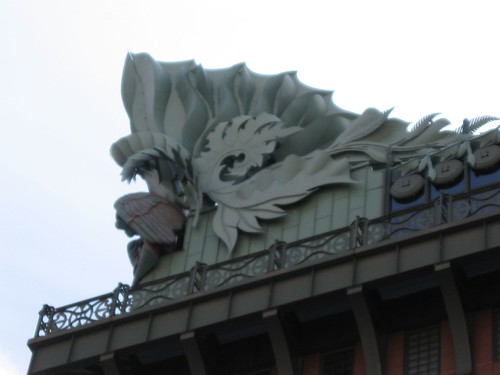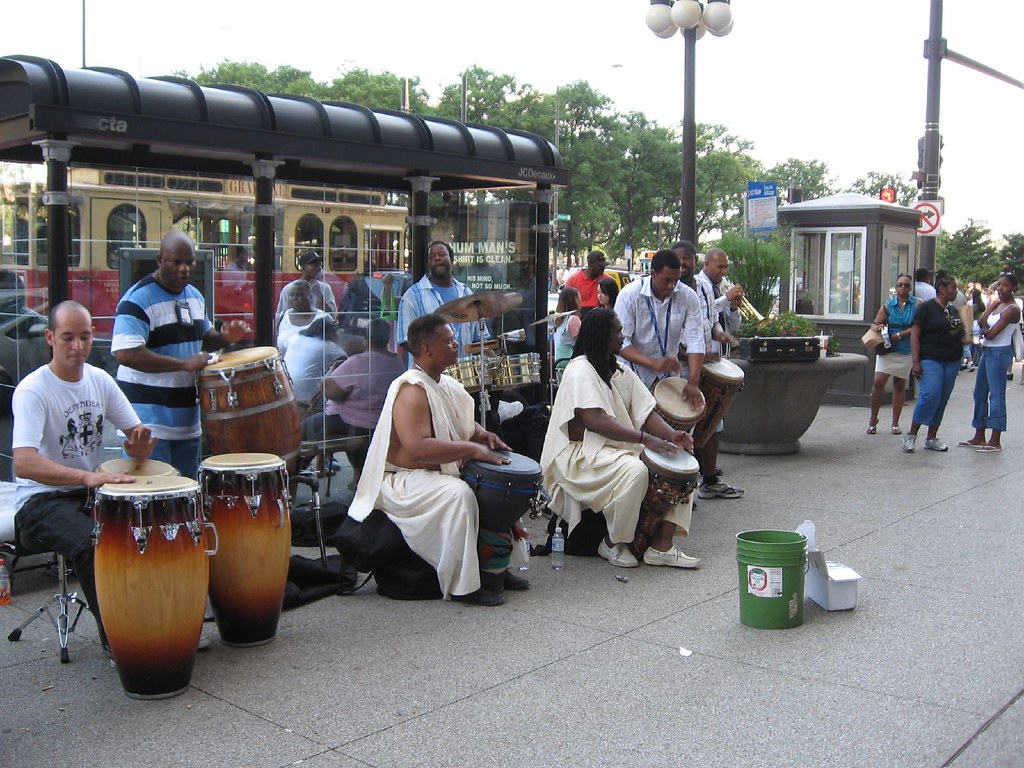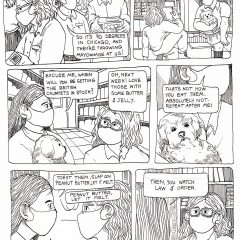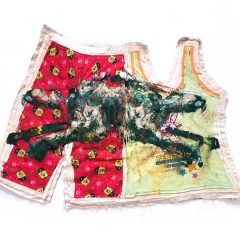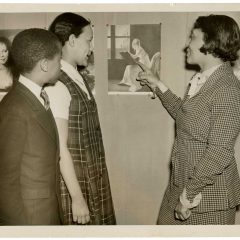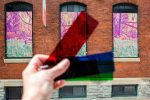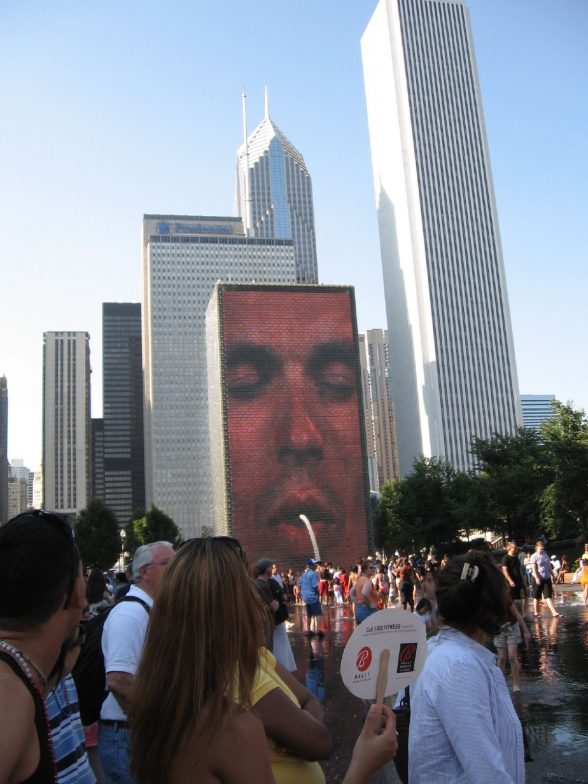
Chicago. Somehow I didn’t know what a metropolis it is–silly me. It’s got the sizzle and buzz of a big-time city. Murray and I were there for the weekend to meet up with our daughter Minna and her beau, Ben.
And it’s got the best contemporary public art ever–fearless decisions. (It also has some of the worst, or at least to my taste, but nothing ventured, nothing gained).
Jaume Plensa’s twin glass-brick-towers fountain is witty and daring–and madly beloved. We watched (and waded) with a huge, diverse crowd. Kids ran under the water running down the sides of the towers. They ran under the spewing mouths that shut off and then suddenly on, like classic fountain cherubs and gargoyles. The children splashed across the water-coated slab between the towers. I loved the digitally shifting giant faces emanating from behind the glass bricks, staring across the slab at one another and at all the people in between. Me and everyone else. It was one of the two unbearably hot days of our trip, but in this spot, Chicago was glorious. What a great piece!
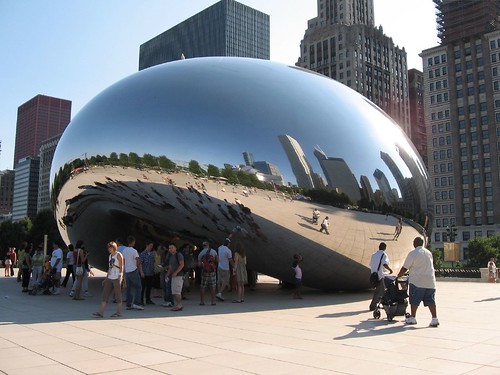
Anish Kapoor, Cloud Gate; ommmm
Maybe half a block away, in the same park, Anish Kapoor’s Cloud Gate attracted an enormous crowd who kept trying to figure out why it looked how it looked. That’s the thing about Cloud Gate, besides the mirror factor. Called “the bean” by Chicagoans (I read that somewhere), it is rather bean shaped, but its underside has a deep, deep belly button in it that creates mandala shapes out of the figures and shadows reflected in its surface.
We watched as crowds reached for the mirrored surface and interacted with the reflections and the shape. This was not one of your one-minute pieces of art that you can pass by after a quick pause. It’s mysterious and bears examination and meditation.
As you can see, I can’t get enough of this one. And so I have included three pictures here. There are more on my Flickr site. But it’s not clear to me that any picture really gives you the full effect of being there–it’s too difficult to comprehend, visually.

Frank Gehry’s Pritzker Pavilion
Another half-a-block away is Frank Gehry’s Pritzker Pavilion. Truth be told, the stage, with its Gehry metallic swooshes, is kind of clunky and goth.

Minna and Ben admire the picnic area behind the Pritzker Pavilion
But the grid that swoops from the stage to the very farthest part of the grassy area, making the sky into a giant sheet of graph paper, is great.
The other truly outstanding public piece of art is the Calder in the Sears Building. It’s a mobile, animated and witty, part landscape, part clock, part day, part night. There are a bunch of Calders all around the city that look much like the ones we’ve seen come and go in Philadelphia, but this is the piece de resistance, with its Pop energy and whimsy. It’s a crowd-pleaser without going low-brow.
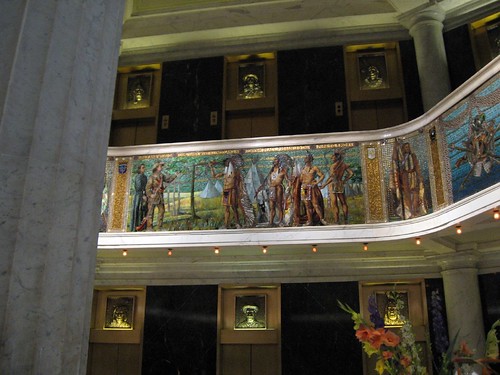
This mosaic, which we eventually saw during an architecture tour, was first suggested to us as a favorite piece of public art by someone eating at a table near ours during our first meal in Chicago. It’s in the Marquette building, and shows the story of natives leading Jolliet and Marquette up the Chicago River to Lake Michigan.
Ironically, our first taste of Chicago was our worst. We happened to be in a spot where the pickings were poor. But we knew it was a great city when during that lunch two people poured their hearts out, eager to share the things they loved most about their hometown. A two-year Chicago resident from London, named his favorite restaurants, and then apologized for smothering us with information. He was ebullient, unable to restrain himself from sharing. A woman sitting on the other side of us, when she overheard we were embarking on a walking tour of public art, directed us to her favorite mosaic (above).
Thanks to both of you, wherever you are. The trip was super, your suggestions dead on. We loved it all except for the heat on Sunday.
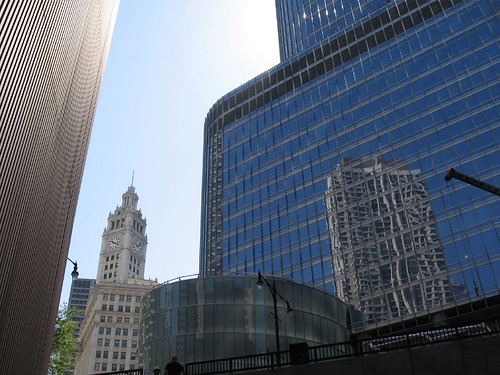
Trump condos under construction on the right are next to the ornate Wrigley Building clock tower.
The architecture in Chicago is another do-not-miss affair. And honestly, you can’t miss it if you are anywhere in the vicinity of The Loop. The skyscrapers are stylish and rich with ornamental detail. Old is next to new. New is truly new. As in the art, there’s a fearlessness here, a willingness to accept what is not a four-square building. Some of that richness has to do with the landscape. Chicago builds right up to its river, right on top of the mud. And the results are buildings that respond to the river’s meanders, with rakish angles and curves.
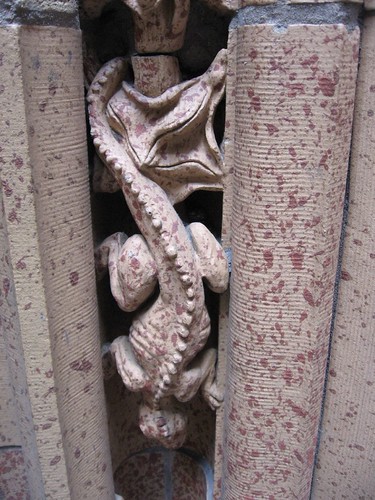
Building detail of a salamander on the Fisher Building, which, punning on its name, had a lot of sea-creature imagery.
We took a walking tour of older skyscrapers, organized by the Chicago Architecture Foundation, which offers a variety of tours on foot, by boat and by bus.
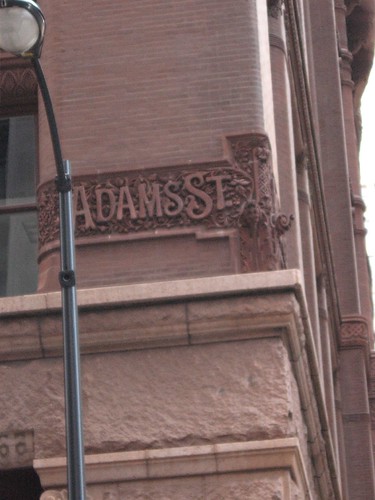
This detailed street sign is on the corner of The Rookery, by Burnham & Root; the architects and their building play a large role in the book Devil in the White City, about the Chicago World’s Fair. The windows of this building–a large center pane plus double-hung windows on either side of it–are called Chicago style, and indeed we saw lots of buildings with this kind of window.
The details on the buildings were amazing and, in the course of it all, we learned quite a bit about Chicago architectural history, including the fire that wiped out 1/3 of the city, providing a clean slate that allowed the city to reinvent itself. Part of why Chicago was able to do so was its main means of transportation and commerce remained intact, including the rails and the river. I couldn’t help but think about poor New Orleans, and wondered if it is up to doing the same thing.
Although we were on a historic skyscrapers tour, learning about buildings that typified art deco, Chicago style and Beaux Arts construction, we also looked at the 1991 Harold Washington Library, which is Post Modern, with comic references to lots of the important buildings in Chicago. I especially enjoyed the over-sized trim at the top.
The streetscape in Chicago was busier than Philadelphia’s, but slower than New York’s. We saw a couple of drum groups on the street as well as a unicyclist, and a puppet show in a box-stage.
I admired a lot of the plantings–far more ambitious on the whole than what Philadelphia does, although there’s been a real effort to increase that sort of thing here. These bicycle racks put Philadelphia’s stolid ones to shame.
I’ll have to follow up in a separate post on the Chicago Art Institute and the Museum of Contemporary Art, both hits.
I have to end on a personal note. Murray and I had met in Chicago. He was working at a suburban chain of newspapers there, and I was visiting a friend. At the suggestion of a group of friends who all take credit, I called him up and the rest is history. So to us, Chicago is a place of romance. My daughter with Ben continues the tradition. They announced to us their engagement during a toast at dinner.
I’ve got lots of great pictures on my Chicago Flickr set.
This is the first of several posts on Chicago.


